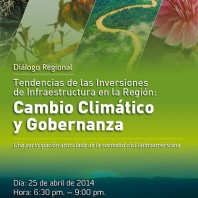In late April 2014 BIC participated in the Regional Dialogue “Trends in Infrastructure Investments in the Region Climate Change and Governance” in Lima, Peru with more than 20 other Latin American organizations. The event was organized in two parts, one public and one internal workshop. The main objectives in the “regional dialogue” were: • Articulation …
It took many years to establish the World Bank’s operational policies that safeguard society and the environment, and are some of the world’s highest development standards. As the Bank reviews these policies, civil society is organizing efforts to present their concerns and expectations, and offer their inputs as to what the outcome of the review should be.
The project will require an investment of some US$118mn, being financed to the tune of US$103mn by a World Bank loan and US$15mn in counterpart funding by the La Paz government.
The World Bank and the Government of Bolivia recognize the observations of the TCO Takana I on deficiencies in the Indigenous Peoples Plan of the Ixiamas – San Buenaventura Highway project and accept to start a process to improve the Indiginous Plan even after the project was approved.
The World Bank and the Government of Bolivia recognize the observations of the TCO Takana I on deficiencies in the Indigenous Peoples Plan of the Ixiamas – San Buenaventura Highway project and accept to start a process to improve the Indigenous Plan even after the project was approved.
The project has a great potential to reorder and even positively or negatively change the dinamics of development and conservation in the region. Bolivia’s government has decided that the PAD will not be public before it’s approved. It seems that the project underestimates its indirect influence, and there are shortcomings in planification and consultation.
Despite recent internal reforms, new evidence raises questions about bank quality control. In direct contrast to IDB management claims, the OVE evaluation found the actual evaluability of projects has deteriorated markedly when measured using a consistent methodology applied to three cohorts of projects.
The Bolivian capital of La Paz and its surroundings, home to nearly 2 million people, is poised to experience a catastrophic drought that will turn productive grasslands into arid deserts as soon as 2040 due to rising temperatures, a new study concludes.
Since the beginning of the 90’s there have been warnings on the potential impacts of the hydroelectric project on the rivers Paraguay and Parana and its surrounding areas.

